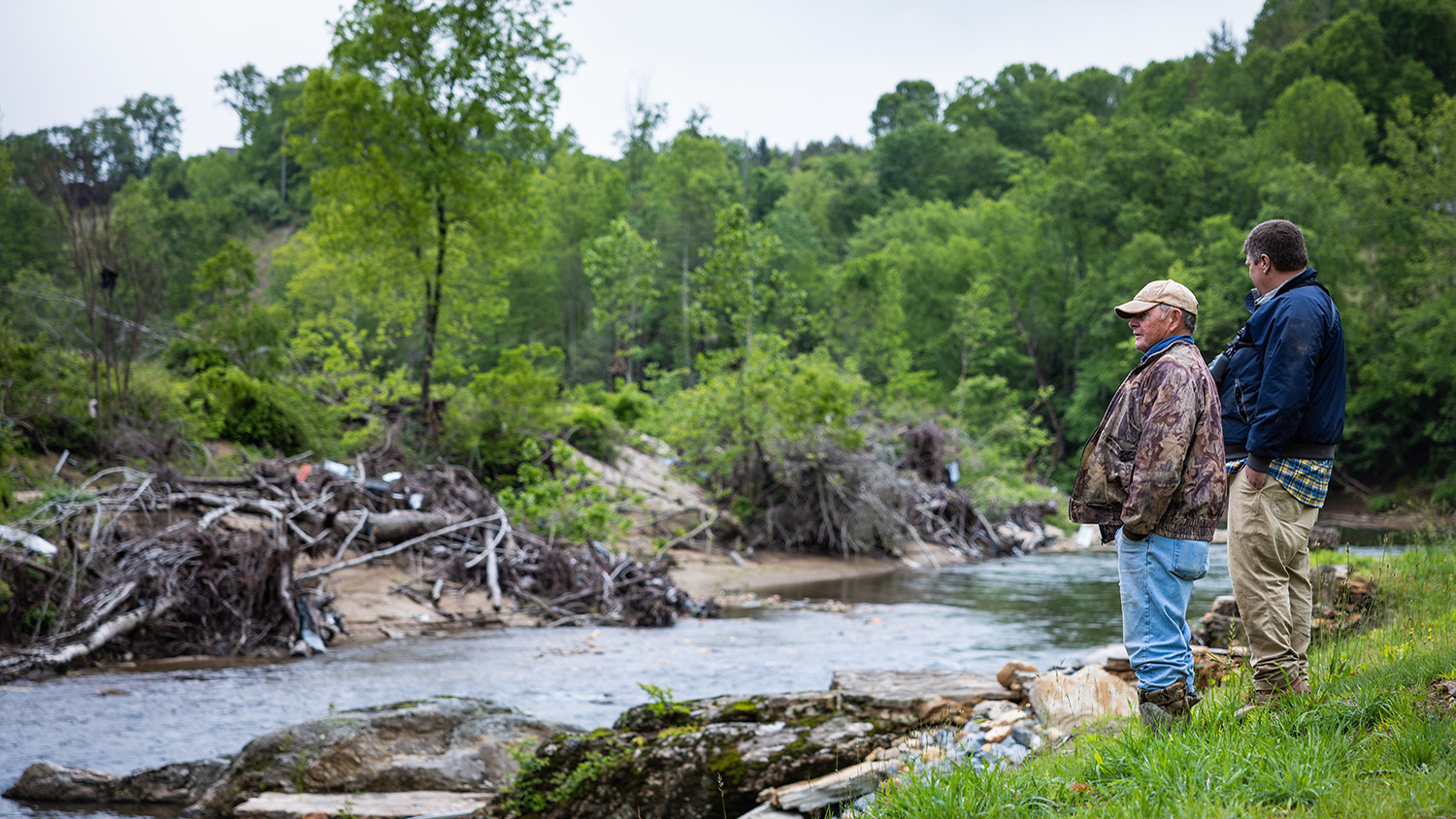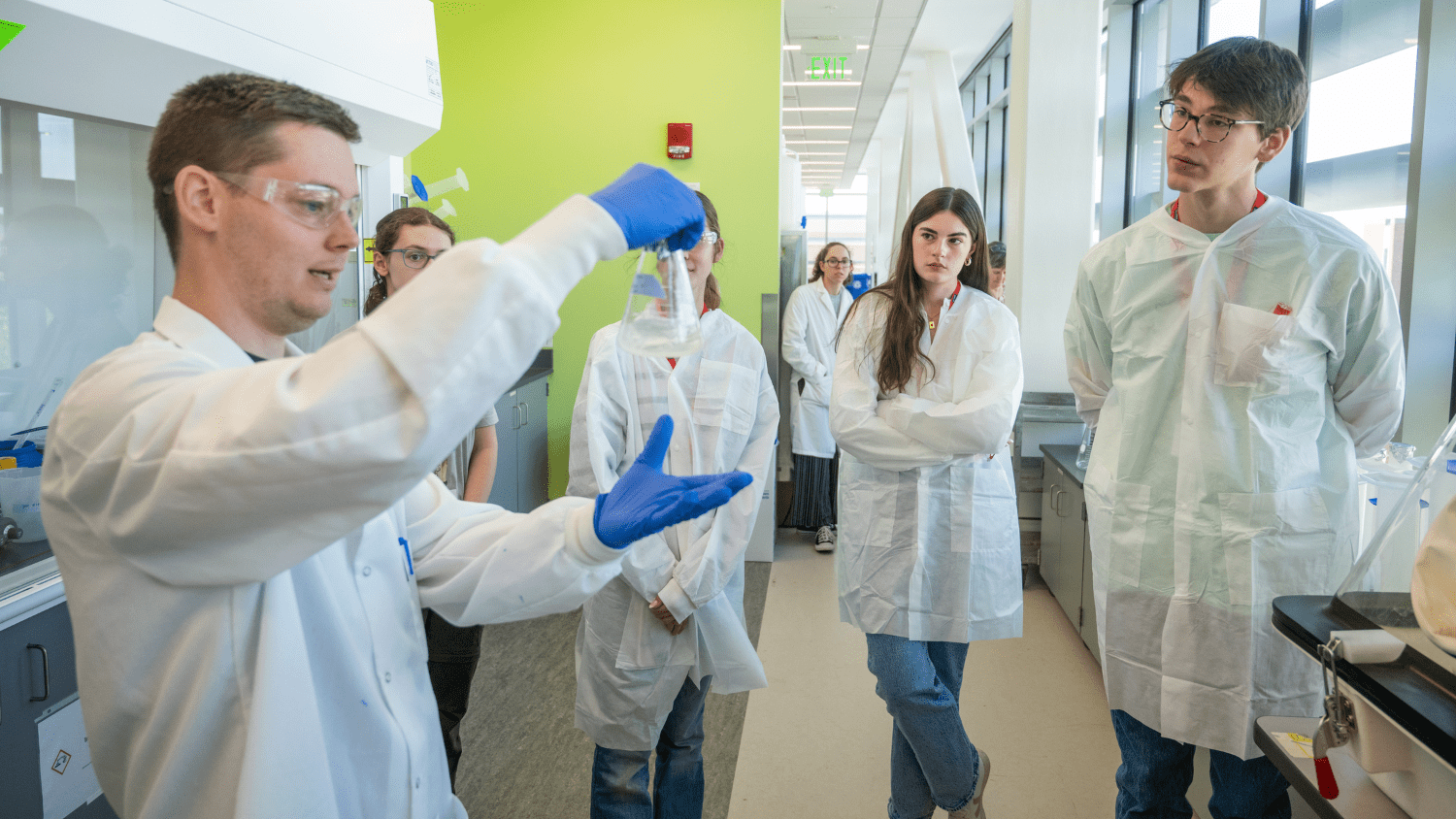Cracking the Corn Code
Interdisciplinary research projects aim to cultivate new, efficient ways of growing corn to make the crop more resilient.
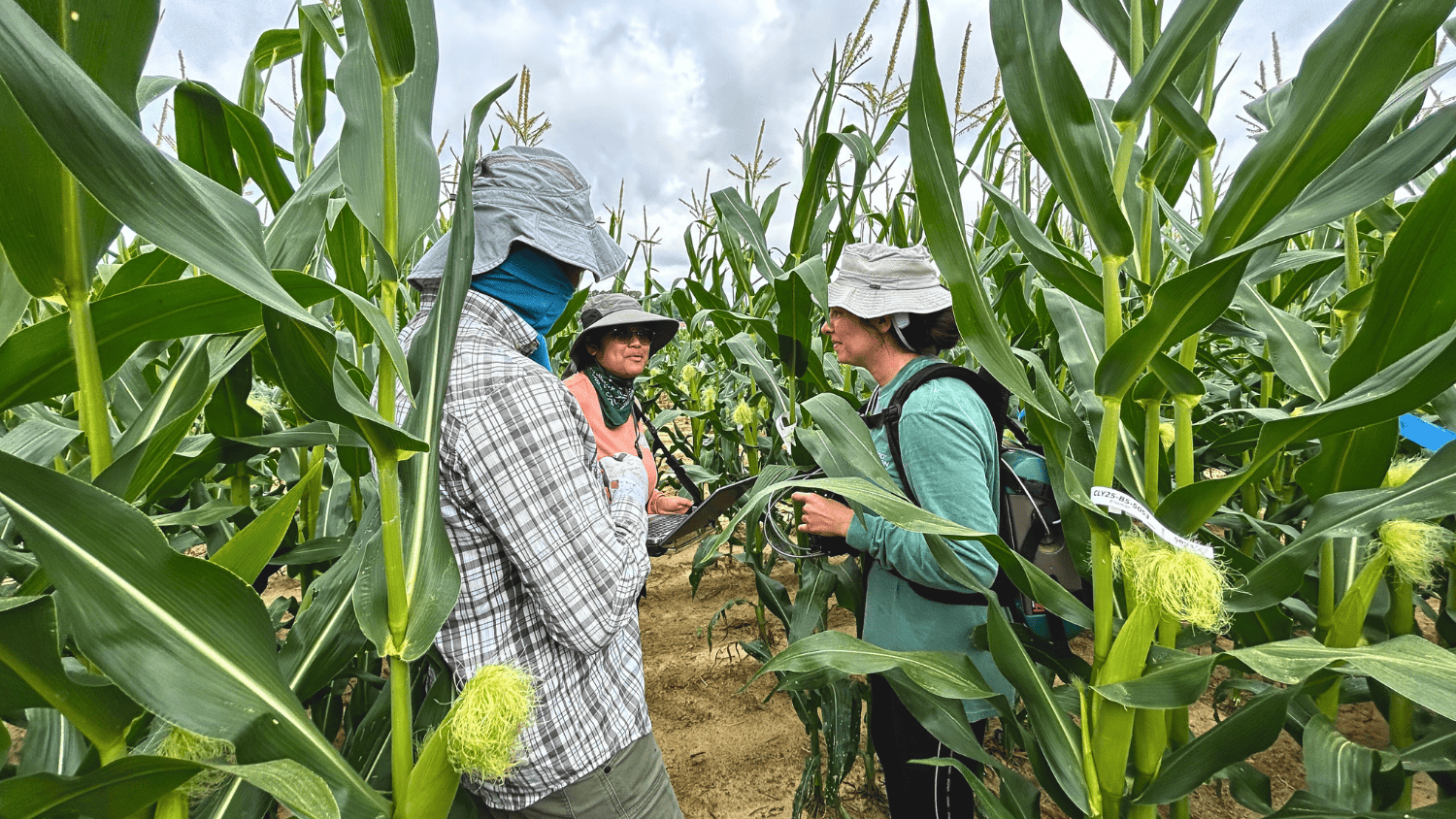
The rows of corn meet the day’s horizon just as the sun peeks up from its slumber. Walking carefully among the plants, Rubén Rellán-Álvarez, with graduate students and lab technicians in tow, stops to examine a corn leaf. He wants to see if this new hybrid variety is thriving despite being planted earlier in the season and/or with less fertilizer.
It’s an hourslong process of plodding through the maze of plants carrying heavy backpacks of equipment to measure nitrogen in the soil at the base of the corn and within its leaves. But someday, one of these unassuming stalks could lead to a breakthrough in how and when farmers plant their corn. It’s one of several interdisciplinary, multi-university projects tapping the expertise of CALS faculty to help make growing corn more efficient.
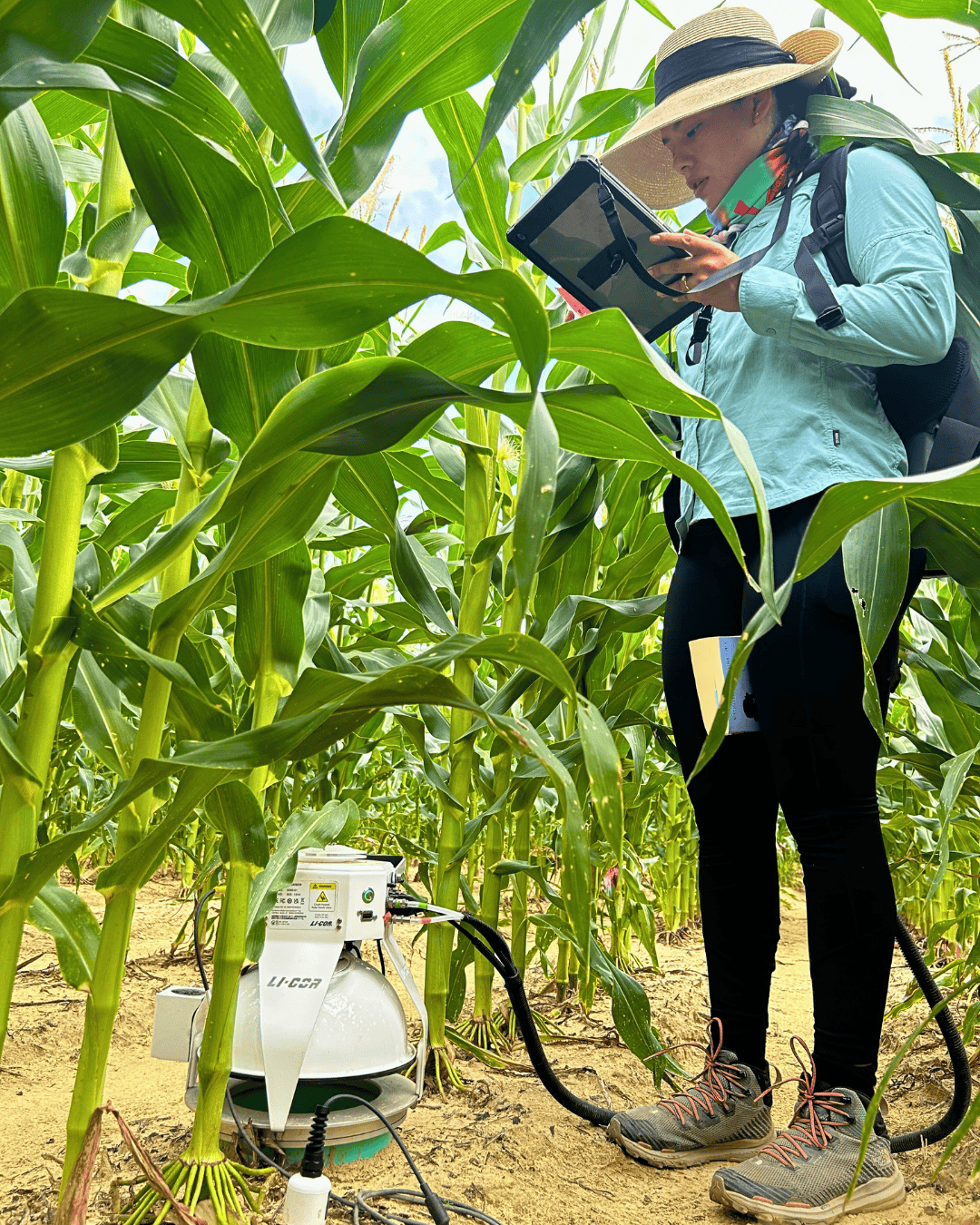
From juicy corn on the cob and crunchy tortilla chips to livestock feed and ethanol for gasoline, corn is an ever-present ingredient in our daily lives. But the golden crop needs a lot of nitrogen-based fertilizer to produce a profitable yield — fertilizer that costs farmers money and time.
That’s why Rellán-Álvarez, an expert in maize genetics in the Department of Molecular and Structural Biochemistry, is collaborating with colleagues across CALS and from universities around the country to find a solution for growing corn that lowers farmers’ reliance on fertilizer and minimizes excess nitrogen in the air and waterways.
“By improving nitrogen efficiency in corn production — whether that’s through new varieties or new management strategies — we can reduce the amount of unused nitrogen that makes its way into the environment and reduce the amount of fertilizer farmers need to buy,” Rellán-Álvarez says.
Finding Efficiencies
But it isn’t just about creating a new variety of corn that better manages nitrogen. It’s also about improving the timing of planting the crop. The CERCA (Circular Economy that Reimagines Corn Agriculture) project headed by the U.S. Department of Agriculture’s Agricultural Research Service, with support from the Foundation for Food & Agriculture Research, is leveraging the expertise of researchers across the U.S., including Rellán-Álvarez, to develop a cold-tolerant variety of corn that could be planted earlier in the season.
Most farmers apply nitrogen fertilizer in the fall for logistical and economic reasons. Rellán-Álvarez says this fertilizer can be lost in the spring due to soil microbial activity if a crop is not planted early enough to start using it. That’s where corn bred for early planting could help.
Joseph Gage, an assistant professor in the Department of Crop and Soil Sciences, is helping study cold tolerance in corn using thermal and multispectral sensors to characterize how the plants grow under cold conditions and without nitrogen fertilizer.
“The idea is to look for differences in plant traits and also look at the degree to which different genes are turned on or off or up and down,” Gage says.
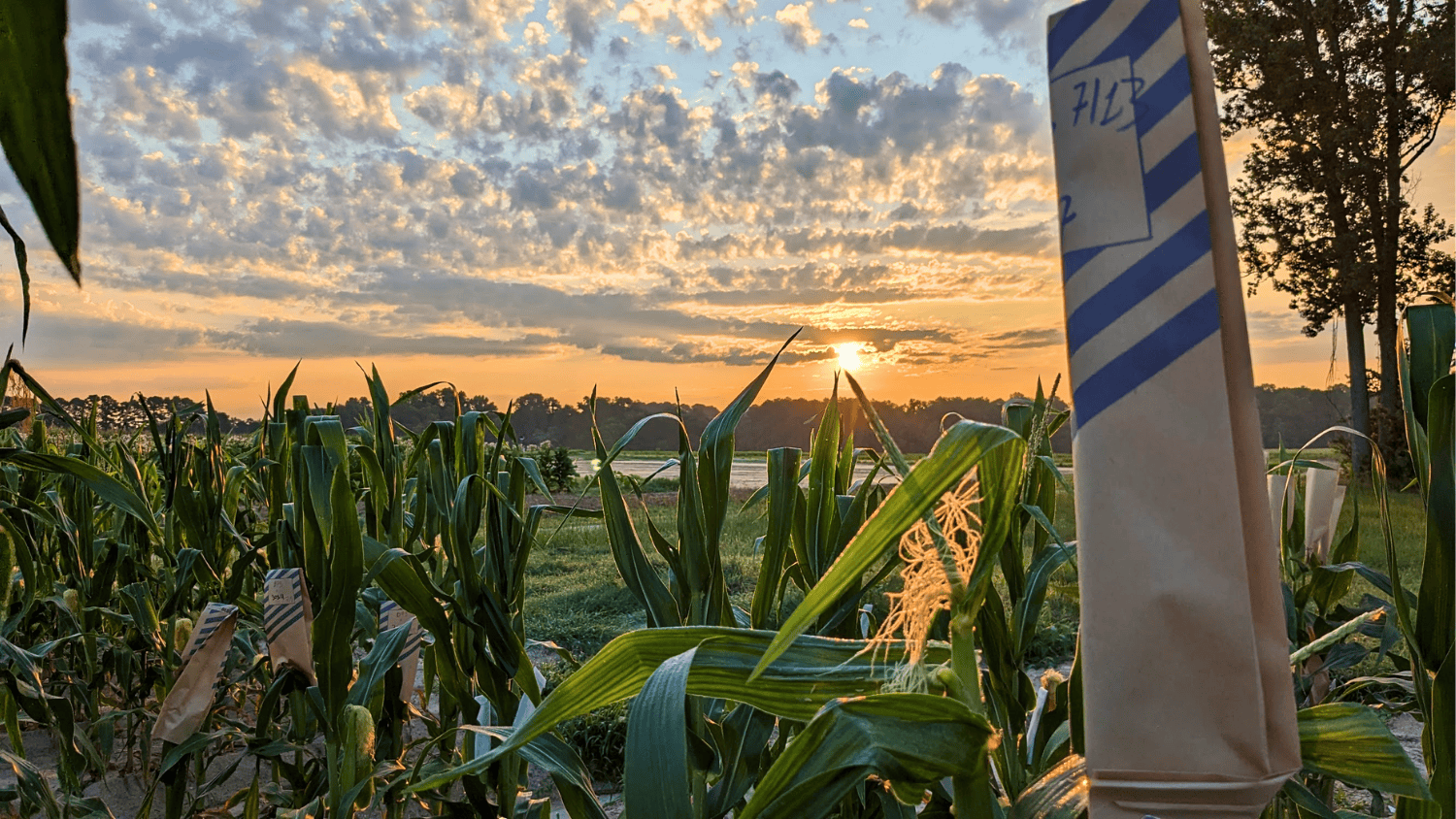
Some wild relatives of corn are better adapted to growing in colder temperatures and in less fertile soil, so sequencing the genes underlying those traits could open the door to a new kind of commercial corn.
Redomesticating Wild Maize
Tidy rows of small pots holding newly sprouted corn plants in the bright greenhouse atop NC State’s Plant Sciences Building hold another key to the puzzle. This second project, developed with the University of Illinois Urbana-Champaign, the University of Arizona and Oak Ridge National Laboratory, brings together six faculty affiliates with the N.C. Plant Sciences Initiative. Their goal is to improve nitrogen efficiency in corn production by integrating traits from wild maize that naturally stop soil microbes from converting nitrogen fertilizer into forms not easily absorbed by crops.
In an initial experiment, Rellán-Álvarez, Gage and Alex Woodley, a soil scientist in the Department of Crop and Soil Sciences, are assessing several varieties of wild and commercial corn to see which ones consistently produce compounds that inhibit the conversion of nitrate in the soil, a form of nitrogen easily lost in the environment.
“This sets us up for success because we can screen a lot of lines at one time and then determine which ones are duds and which ones we should measure more intensely and take to the field,” Woodley says.
“We can screen a lot of lines at one time and then determine which ones are duds and which ones we should measure more intensely and take to the field.”
As part of the project, Rellán-Álvarez and Gage will expand their work on the genetics and genome sequences of commercial and wild corn, and Woodley and Debjani Sihi, a biogeochemist in the departments of Crop and Soil Sciences and Plant and Microbial Biology, will focus on soil management practices, including the use of synthetic nitrification inhibitors. Christine Hawkes, an ecologist in the Department of Plant and Microbial Biology, will investigate how root-associated fungi might improve corn’s ability to absorb nutrients, such as nitrogen, from the soil.
The goal is to scale up the research to take a more comprehensive view of the nitrogen cycle and find new, more resilient methods for growing crops.
“It all ties together: We’re looking beyond just gene labels and environmental aspects. We’re also striving to develop economic strategies that save farmers millions of dollars by coupling lab and field data with process-based models,” Sihi says.
- Categories:

